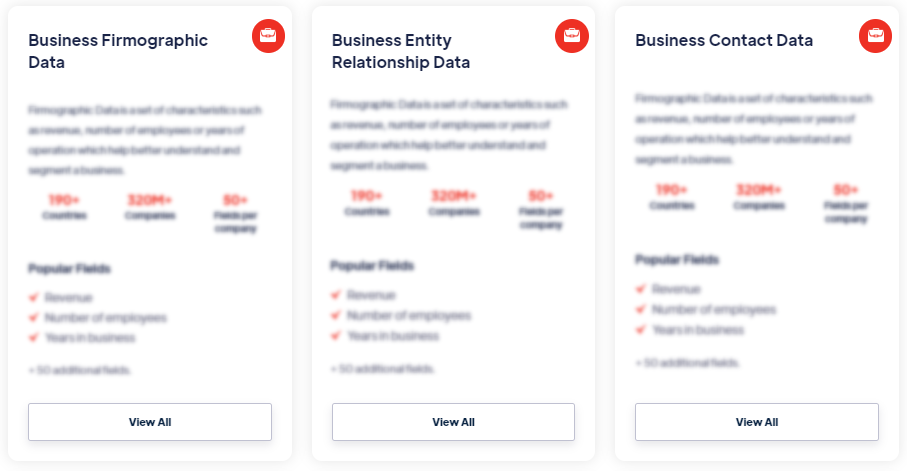Best
Student Dropout Rates Data
Products
Student dropout rates data typically includes information on the number of students who drop out of school, the reasons for their dropout, their demographic characteristics (such as age, gender, ethnicity), grade level, and the school or district they belong to. It may also include additional factors that contribute to dropout rates, such as socioeconomic status, academic performance, and attendance records. Read more
Our Data Integrations


Request Data Sample for
Student Dropout Rates Data

Browse the Data Marketplace

Frequently Asked Questions
1. What Does Student Dropout Rates Data Include?
Student dropout rates data typically includes information on
the number of students who drop out of school, the reasons for
their dropout, their demographic characteristics (such as age,
gender, ethnicity), grade level, and the school or district they
belong to. It may also include additional factors that
contribute to dropout rates, such as socioeconomic status,
academic performance, and attendance records.
2. Where Can Student Dropout Rates Data Be Found?
Student dropout rates data can be found in various educational
databases and reports, such as those maintained by educational
institutions, school districts, state departments of education,
and national education agencies. Government agencies, research
organizations, and educational research publications may also
provide access to dropout rates data.
3. How Can Student Dropout Rates Data Be Utilized?
Student dropout rates data is used to monitor and assess
educational outcomes, identify at-risk student populations, and
inform policy and intervention strategies to reduce dropout
rates. Educational institutions and policymakers use this data
to identify trends, develop targeted interventions, and
implement programs aimed at improving student retention and
success.
4. What Are the Benefits of Student Dropout Rates Data?
Student dropout rates data provides insights into the
educational system's effectiveness in keeping students
engaged and completing their studies. By analyzing dropout
rates, educational stakeholders can identify patterns and risk
factors associated with student disengagement and dropout. This
information can guide the development of interventions and
support systems to improve student retention, increase
graduation rates, and promote educational equity.
5. What Are the Challenges of Student Dropout Rates Data?
One of the challenges in analyzing student dropout rates data
is ensuring the accuracy and consistency of the reported data
across different schools, districts, and regions. Definitions
and methodologies for measuring dropout rates may vary, making
comparisons and generalizations challenging. Additionally,
identifying the specific reasons for student dropout can be
complex, as it may involve multiple factors that vary among
individuals and communities.
6. How Can Student Dropout Rates Data Impact Education?
Student dropout rates data plays a critical role in identifying
gaps and disparities in educational outcomes. By analyzing this
data, educational institutions can implement targeted
interventions and support systems to address the factors
contributing to student dropout. It also helps policymakers in
developing evidence-based policies and initiatives to improve
educational outcomes and ensure equitable access to education
for all students.
7. What Are the Emerging Trends in Student Dropout Rates Data
Analysis?
Emerging trends in student dropout rates data analysis include
the integration of data from multiple sources to provide a
comprehensive understanding of dropout patterns and risk
factors. This includes incorporating social and emotional
factors, such as student well-being and engagement, as well as
leveraging predictive analytics and machine learning algorithms
to identify early warning signs of potential dropout. The use of
data visualization techniques and interactive dashboards also
facilitates the interpretation and communication of dropout
rates data to different stakeholders.
â€
